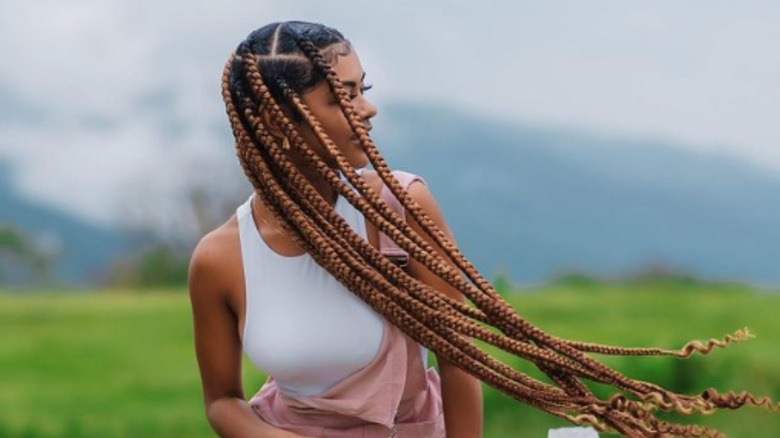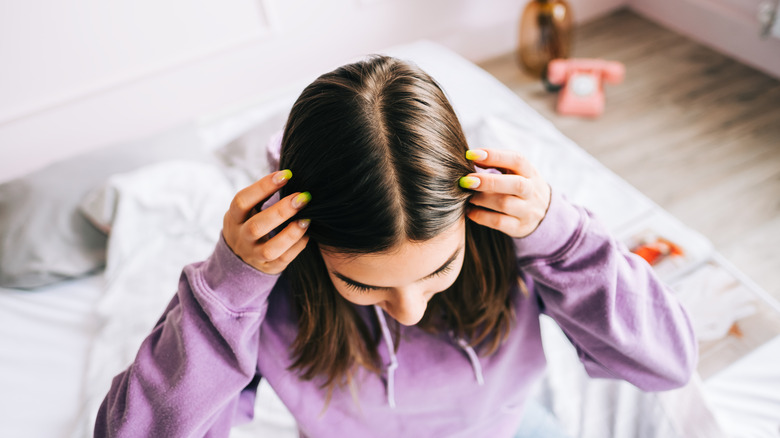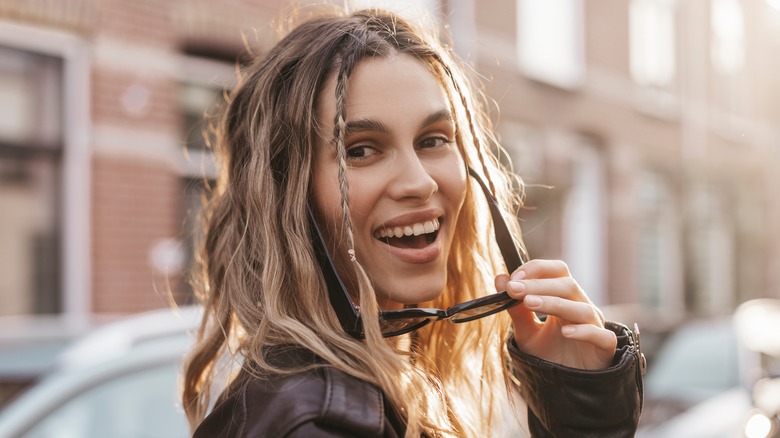What Happens To Your Hair When You Stop Wearing Braids?
Remember when you and your friends used to get together and braided each other's hair as kids? You may have even looked up easy ways to do your own French braids in more recent times. Today, we can easily spend hours on our phones scrolling through mesmerizing Instagram videos of people doing unique braids on their tresses.
Braids — whether they're box braids, Dutch braids, cornrows, pigtail braids, or simple three-strand braids —have fascinated civilization for a long time. While the earliest known mention of braids can be traced back to Africa in 3500 B.C., braids seem to have withstood the test of time. Hair stylist Alysa Pace told Byrdie that the Himba people of Namibia are the ones who first practiced the art of braiding. They styled their tresses as a means to tell who was from what tribe. "Braid patterns and hairstyles were an indication of a person's tribe, age, marital status, wealth, power, and religion," she explained. What started off as a social and cultural necessity has now evolved into a fashion statement that most embrace at some point in their lives. For some, it's also a protective style they turn to as a method to keep their locks in place.
Despite their beauty and popularity, however, you may have noticed that when you have your hair in braids, your scalp starts to feel tight and itchy after a while. Perhaps you've even considered stopping the habit to alleviate the unpleasant side effects. Well, this is what'll happen if you do.
You'll prevent hair loss and give your scalp some relief
All good things seem to come with their own set of downsides, and braids are no different. They can be damaging to your hair, especially if they're worn too tightly and for too long. While in extreme cases you can develop temporary to permanent traction alopecia (which is basically a form of hair loss caused by wearing hairstyles that stress on your scalp and tresses), having your hair in tight braids can pull on your hair follicles in the best of circumstances. "The stress on the follicle can weaken it and sometimes cause hair loss," Ouidad's artistic educator and stylist Jessica O'Brien shared with Byrdie.
When you stop wearing braids, you give your scalp room to breathe and your hair follicles a chance to escape persistent tugging. A lot goes into keeping braids looking the way they do. You have to moisturize regularly, have a dedicated haircare routine, and wash your braids to maintain a clean scalp and tresses. If you don't pay attention to hygiene, having braids can actually lead to sweat and dirt buildup, which can then cause skin irritation.
Wearing braids, especially styles like box braids, can get in the way of simple lifestyle habits like sleeping, using the washroom, and getting dressed too, according to YouTube content creator Janae.
If you must wear braids, make sure you follow these simple rules
It is easy to get carried away with the beauty and style that braids offer, especially when there are even braided hairstyles that look great with short hair now. So, if you don't feel like stopping the practice altogether, there are some things you can be paying attention to for better hair health.
Giving your scalp and hair adequate breaks in between the different styles is a good tip. Most professionals would tell you that eight weeks is the optimal time period to keep braids in before removing them and giving your locks some TLC. "The best way to wear braids with minimal damage is not braiding too tight at the scalp, taking breaks between wearing braids, and moisturizing your scalp before, during, and after wearing braids with essential oils," O'Brien told Byrdie. You could even opt to only loosely braid some of your locks as opposed to all of your hair all the time.
Wearing braids comes with its own set of instructions to keep them looking their best while prioritizing hair health. If stopping the style is a complete no for you, at least embrace moderation and care. No style is worth hair damage.


